Huawei is a Chinese multinational technology corporation headquartered in Shenzhen, China. Founded in 1987 by Ren Zhengfei, a former PLA officer, Huawei's primary business focuses on telecommunications equipment, consumer electronics, autonomous driving systems for electric vehicles, and rooftop solar power products. The company has become a significant global player in the technology sector, facing both commercial success and geopolitical scrutiny.
1987: Huawei established as a collectively owned enterprise
In 1987, Huawei was established as a collectively owned enterprise, an intermediary corporate ownership status between state-owned enterprises and private businesses.
1992: Chinese government issues licenses for private businesses
In 1992, the Chinese government began issuing licenses for private businesses.
1997: Shenzen's Provisions on State-owned Company Employee Stock Option Plans
Shenzen's 1997 Provisions on State-owned Company Employee Stock Option Plans allowed concentrating employee ownership of companies, such as Huawei, via the company's trade union.
1998: Joint Ventures with Telecommunications Bureaus
By 1998, Huawei had signed agreements with municipal and provincial telephone bureaus to create Shanghai Huawei, Chengdu Huawei, Shenyang Huawei, Anhui Huawei, Sichuan Huawei, and other companies.
February 2003: Cisco Systems sues Huawei for patent infringement and illegally copying source code
In February 2003, Cisco Systems sued Huawei Technologies for allegedly infringing on its patents and illegally copying source code used in its routers and switches.
July 2003: Huawei establishes their handset department
In July 2003, Huawei established their handset department.
July 2004: Huawei settles with Cisco, admits to copying software
By July 2004, Huawei removed the contested code, manuals and command-line interfaces and the case was subsequently settled out of court. As part of the settlement Huawei admitted that it had copied some of Cisco's router software.
2004: Huawei employee photographs competitor's equipment
At the 2004 Supercomm tech conference in Chicago, a Huawei employee allegedly opened up the networking equipment of other companies to photograph the circuit boards.
2004: China Development Bank Credit Line
Between 2004 and 2009, China Development Bank provided a credit line totaling US$30 billion to Huawei's customers.
2004: Nortel compromised by Chinese hackers
In 2004, Brian Shields, former chief security officer at Nortel, said that his company was compromised in 2004 by Chinese hackers; executive credentials were accessed remotely, and entire computers were taken over. Shields does not believe Huawei was directly involved but thinks that Huawei was a beneficiary of the hack.
2004: Huawei ships first phone, the C300
In 2004, Huawei shipped their first phone, the C300.
June 2005: Huawei ships first 3G phone, the U626
In June 2005, Huawei shipped their first 3G phone, the U626.
2006: Huawei launched first Vodafone-branded 3G handset, the V710
In 2006, Huawei launched the first Vodafone-branded 3G handset, the V710.
2009: China Development Bank Credit Line
Between 2004 and 2009, China Development Bank provided a credit line totaling US$30 billion to Huawei's customers.
2009: Huawei Marine Networks delivered HANNIBAL submarine communications cable system
In 2009, Huawei Marine Networks delivered the HANNIBAL submarine communications cable system for Tunisie Telecom across the Mediterranean Sea to Italy.
2009: Huawei has ability to exploit backdoors for law enforcement officials
In 2009, United States officials disclosed that Huawei had the ability to covertly exploit backdoors intended for law enforcement officials, found on carrier equipment like antennas and routers.
2009: NSA infiltrates Huawei's computer network
In 2014, Der Spiegel and The New York Times reported that, according to global surveillance disclosures, the National Security Agency (NSA) infiltrated Huawei's computer network in 2009.
2010: 80% of world's top 50 telecoms companies had worked with Huawei
As of the beginning of 2010, approximately 80% of the world's top 50 telecoms companies had worked with Huawei.
2010: Huawei discloses list of board of directors for the first time
In 2010, Huawei disclosed its list of board of directors for the first time.
2010: European Commission Investigation
In 2010, the European Commission launched an investigation into China's subsidies that distorted global markets and harmed European vendors, with Huawei offering the initial complainant US$56 million to withdraw the complaint.
2010: Huawei Cyber Security Evaluation Centre established
In 2010, the Huawei Cyber Security Evaluation Centre (HCSEC) was set up to assuage security fears. It examined Huawei hardware and software for the UK market, with oversight from GCHQ.
2011: Entry into Photovoltaic Market
In 2011, Huawei entered the photovoltaic (PV) market and opened an Energy Center of Competence in Nuremberg, Germany.
2011: Vodafone discloses security vulnerability in Huawei-installed software
In 2011, UK telecom Vodafone disclosed that its Italian fixed line network contained a security vulnerability in its Huawei-installed software, which Huawei later fixed. Vodafone was satisfied and increased its reliance on Huawei.
January 2012: Australian intelligence detects backdoor in telecom network
In January 2012, Australian intelligence detected a backdoor in the country's telecom network, reportedly caused by a malicious software update from Huawei that transmitted data to China. They shared these findings with the United States.
September 2012: Huawei launches first 4G ready phone, the Ascend P1 LTE
In September 2012, Huawei launched their first 4G ready phone, the Ascend P1 LTE.
2012: Largest Telecom Equipment Maker
In 2012, Huawei Technologies Co. Ltd. was recognized as the world's largest telecom equipment maker and China's largest telephone-network equipment maker.
2012: White House security review finds no evidence that Huawei spied for China
In 2012, a White House-ordered security review found no evidence that Huawei spied for China, suggesting that security vulnerabilities on its products posed a greater threat to users.
June 2013: Huawei launches the Ascend P6
In June 2013, Huawei launched the Ascend P6.
December 2013: Huawei introduces Honor as a subsidiary independent brand in China
In December 2013, Huawei introduced Honor as a subsidiary independent brand in China.
May 2014: Huawei launches the Ascend P7
In May 2014, Huawei launched the Ascend P7.
2014: Counter-Espionage Law
In 2014, China introduced the Counter-Espionage Law, which, alongside the 2017 National Intelligence Law, has been interpreted as compelling Chinese businesses, including Huawei, to collaborate with Chinese intelligence agencies.
2014: Reports surface of NSA infiltrating Huawei's network in 2009
In 2014, Der Spiegel and The New York Times reported that, according to global surveillance disclosures, the National Security Agency (NSA) infiltrated Huawei's computer network in 2009.
2014: World's No. 1 Applicant for International Patents
In 2014, Huawei became the world's No. 1 applicant for international patents, with 3,442 patents.
2014: NSA penetrated Huawei's corporate networks
In 2014, the National Security Agency (NSA) penetrated Huawei's corporate networks in China to search for links between the company and the People's Liberation Army. This allowed them to monitor accounts of Huawei employees, including founder Ren Zhengfei.
January 2015: Huawei discontinues "Ascend" brand for its flagship phones
In January 2015, Huawei discontinued the "Ascend" brand for its flagship phones and launched the new P series with the Huawei P8.
September 2015: Huawei partners with Google to build the Nexus 6P
In September 2015, Huawei partnered with Google to build the Nexus 6P.
September 2015: Huawei Watch Release
On 2 September 2015, Huawei released the Huawei Watch, an Android Wear-based smartwatch, at Internationale Funkausstellung Berlin. It was the first smartwatch produced by Huawei.

2015: Huawei Culture Club sponsor for Ultra Music Festival 2015
In 2015, Huawei Culture Club was listed as an official sponsor for Ultra Music Festival, one of the largest electronic music festivals in Africa.
September 2016: Manufacturing Capabilities Integrated into Eindhoven Hub
In September 2016, Huawei integrated new manufacturing capabilities into its Eindhoven hub in the Netherlands, enabling it to produce 7,000 inverter units per month.
2016: Leica partners with Huawei for smartphone cameras
In 2016, German camera company Leica established a partnership with Huawei to co-engineer Leica cameras into Huawei smartphones, including the P and Mate Series. The first smartphone to feature this collaboration was the Huawei P9.
2016: Huawei enters the laptop market with the release of its Huawei MateBook series
In 2016, Huawei entered the laptop markets with the release of its Huawei MateBook series of laptops.
January 2017: Data transfers from African Union headquarters peaked to servers in Shanghai
From January 2012 to January 2017, data transfers on servers at the African Union headquarters, whose computer systems were supplied by Huawei, peaked after hours to unknown servers hosted in Shanghai.
April 2017: Entry into Residential Solar Market
In April 2017, Huawei entered the residential solar market with the launch of its string solar inverters and DC power optimizers, and later solar batteries.
2017: PRC national intelligence-gathering activities law
In 2017, Article 7 of the PRC national intelligence-gathering activities law stipulated that all Chinese citizens and organizations are obliged to cooperate upon request with PRC intelligence operations and maintain the secrecy of such operations.
2017: Jury finds Huawei misappropriated trade secrets of T-Mobile US
In 2017, a jury found that Huawei had misappropriated trade secrets of T-Mobile US but awarded damages only for a breach of supplier contract; it did not compensate T-Mobile for claims of espionage.
2017: New national intelligence law promulgated
In 2017, under Xi Jinping's leadership, the National People's Congress promulgated a new national intelligence law. Experts argue that this law, along with the 2014 Counter-Espionage Law, compels Chinese businesses to collaborate with Chinese intelligence agencies.
May 2018: Huawei no longer allows unlocking the bootloader of their phones
In May 2018, Huawei stated that they will no longer allow unlocking the bootloader of their phones, which would disallow installing third party system software or security updates.
August 2018: National Defense Authorization Act 2019 signed into law
In August 2018, the National Defense Authorization Act for Fiscal Year 2019 (NDAA 2019) was signed into law, containing a provision that banned Huawei and ZTE equipment from being used by the US federal government, citing security concerns.
November 2018: New Zealand blocks Huawei from supplying equipment to Spark New Zealand's 5G network
In November 2018, New Zealand blocked Huawei from supplying mobile equipment to Spark New Zealand's 5G network, citing network security risks and concerns about China's National Intelligence Law.
December 1, 2018: Meng Wanzhou detained in Canada
On December 1, 2018, Meng Wanzhou, the board deputy chairperson and daughter of the founder of Huawei, was detained upon arrival at Vancouver International Airport by Canada Border Services Agency (CBSA) officers for questioning.
December 2018: German and British intelligence agencies push back against US allegations
Between December 2018 and January 2019, German and British intelligence agencies initially pushed back against the US' allegations, stating that after examining Huawei's 5G hardware and accompanying source code, they have found no evidence of malevolence and that a ban would therefore be unwarranted.
2018: Huawei sells 200 million smartphones
By 2018, Huawei had achieved a significant milestone by selling 200 million smartphones.
2018: Huawei Begins Stockpiling Chips
From 2018, Huawei began massively stockpiling chips and components due to the arrest of Meng Wanzhou in Canada. Key suppliers included Xilinx, Intel, AMD, Samsung, SK Hynix, Micron, and Kioxia.
2018: Expansion of Huawei Music in Africa
In 2018, Huawei Music had 32 million active daily users in China and launched an initiative to expand its usership in Africa, focusing on South Africa. The South African release featured a library that was 80% South African music, with plans to add international music later. Huawei Music also invested in South African artists, events, and music businesses.
2018: Japan Bans Huawei from Government Contracts
In 2018, Japan banned Huawei from receiving government contracts due to national security concerns.
2018: German court rules against Huawei and ZTE in favor of MPEG LA
In 2018, a German court ruled against Huawei and ZTE in favor of MPEG LA, which holds patents related to Advanced Video Coding.
2018: US passes defense funding bill restricting business with Huawei and ZTE
In 2018, the United States passed a defense funding bill barring the federal government from doing business with Huawei, ZTE, and several Chinese vendors of surveillance products due to security concerns.
2018: Federal indictment against Huawei
In June 2025, U.S. District Judge Ann Donnelly in New York denied Huawei's request to dismiss most of a 2018 federal indictment in U.S. v. Huawei Technologies Co et al..
January 2019: German and British intelligence agencies push back against US allegations
Between December 2018 and January 2019, German and British intelligence agencies initially pushed back against the US' allegations, stating that after examining Huawei's 5G hardware and accompanying source code, they have found no evidence of malevolence and that a ban would therefore be unwarranted.
January 28, 2019: US Department of Justice announces financial fraud charges against Meng Wanzhou
On January 28, 2019, the United States Department of Justice formally announced financial fraud charges against Meng Wanzhou.
March 2019: Huawei files lawsuit over NDAA 2019
In March 2019, Huawei filed a lawsuit over the NDAA 2019, alleging it to be unconstitutional because it specifically targeted Huawei without granting it a chance to provide a rebuttal or due process.
March 2019: Huawei files defamation claims
In March 2019, Huawei filed three defamation claims over comments suggesting ties to the Chinese government made on television by a French researcher, a broadcast journalist and a telecommunications sector expert.
May 2019: United States Entity List Inclusion
In May 2019, Huawei was placed on the United States Entity List, barring American software technology companies from supplying ERP systems to Huawei.
May 2019: Huawei Mediapad M5 sends data to Chinese servers without authorization
In May 2019, a Huawei Mediapad M5 belonging to a Canadian IT engineer living in Taiwan was found to be sending data to servers in China without authorization. The apps responsible could not be disabled.

May 2019: Huawei added to Entity List by US Department of Commerce
On 15 May 2019, the Department of Commerce added Huawei and 70 foreign subsidiaries and "affiliates" to its Entity List under the Export Administration Regulations, citing the company having been indicted for "knowingly and willfully causing the export, re-export, sale and supply, directly and indirectly, of goods, technology and services (banking and other financial services) from the United States to Iran and the government of Iran without obtaining a license from the Department of Treasury's Office of Foreign Assets Control (OFAC)".
May 2019: Partial ban on Huawei
The May 2019 ban on Huawei was partial: it did not affect most non-American produced chips, and the Trump administration granted a series of extensions on the ban in any case.
June 2019: US President hints at easing restrictions on Huawei
On 29 June 2019 at the G20 summit, the US President made statements implicating plans to ease the restrictions on US companies doing business with Huawei.
August 2019: Huawei releases smartglasses with Gentle Monster
In August 2019, Huawei collaborated with eyewear company Gentle Monster to release smartglasses.
August 2019: Huawei hires Sidley Austin to lobby in the US
In August 2019, Huawei hired the law firm Sidley Austin to lobby in the US after restrictions were placed by the Trump administration. The lobbying focused on export controls, trade, sanctions, and other national security-related topics.
August 2019: Huawei Unveils Harmony OS
On 9 August 2019, Huawei officially unveiled Harmony OS at its inaugural HDC developers' conference in Dongguan, featuring the ARK compiler for porting Android APK packages.
September 2019: Huawei Offers Deepin OS on Matebook Models
In September 2019, Huawei began offering the Linux distribution Deepin as a pre-loaded operating system on selected Matebook models in China.
November 2019: Huawei MatePad Pro launched
In November 2019, Huawei MatePad Pro was launched, after that, subsequent releases of their MatePad tablet line.
November 2019: Huawei files defamation lawsuits in France
In November 2019, Huawei filed defamation lawsuits in France against a researcher, a TV presenter, and a production company, due to statements made on a TV show alleging Huawei's control by the Chinese state and the CCP.
November 2019: Huawei partners with Devialet for Sound X speaker
In November 2019, Huawei partnered with Devialet and unveiled a new specifically designed speaker, the Sound X.
November 2019: Chinese Ambassador's Link Between 5G and Trade
In November 2019, the Chinese ambassador to Denmark directly linked Huawei's 5G expansion with Chinese trade in meetings with Faroese politicians, threatening to drop a trade deal if Huawei was not allowed to build the national 5G network.
December 2019: Huawei Unveils HMS version 4.0
In December 2019, Huawei unveiled HMS version 4.0, which provides features for app developers as an alternative to Google Mobile Services (GMS).
2019: Allegations of Backdoors and Espionage
As of 2019, the United States had not produced evidence of coordinated hacking by Huawei despite allegations that its products contain backdoors for Chinese government espionage.
2019: Members of the board as of 2019
As of 2019, the members of the Huawei board are Liang Hua, Guo Ping, Xu Zhijun, Hu Houkun, Meng Wanzhou (CFO and deputy chairwoman), Ding Yun, Yu Chengdong, Wang Tao, Xu Wenwei, Shen-Han Chiu, Chen Lifang, Peng Zhongyang, He Tingbo, Li Yingtao, Ren Zhengfei, Yao Fuhai, Tao Jingwen, and Yan Lida.
2019: Second Most Patents Granted by EPO
In 2019, Huawei had the second most patents granted by the European Patent Office.
2019: Huawei reports revenue of US$122 billion
In 2019, Huawei reported a substantial revenue of US$122 billion.
2019: Huawei refers to itself as a private company
In 2019, Huawei shifted its position and referred to itself as a "private company" when commenting on the US government ban, marking a change from its previous classification as a "collective" entity.
2019: Ren Zhengfei denies espionage and backdoor installation
In 2019, Ren Zhengfei stated that Huawei never participates in espionage, does not allow employees to do so, and never installs backdoors, even if required by Chinese law. Premier Li Keqiang stated the Chinese government does not ask companies to spy.
2019: Vietnam Excludes Huawei from 5G Bids
In 2019, Vietnam excluded Huawei from bids to build the country's 5G network due to national security concerns.
2019: Analysis of Huawei employee CVs reveals ties to Chinese state
In 2019, researchers analyzed 25,000 Huawei employee CVs and found that some had worked or trained with China's Ministry of State Security, the People's Liberation Army (PLA), its academies, and a military unit accused of hacking US corporations.
2019: Questions raised about Huawei's business with North Korea
Leaked documents obtained by The Washington Post in 2019 raised questions about whether Huawei conducted business secretly with North Korea, which was under numerous US sanctions.
January 2020: 55,000 Apps Signed Up for HMS Core
As of 16 January 2020, Huawei reported that 55,000 apps had signed up to use its HMS Core software, expanding the Huawei Mobile Services (HMS) ecosystem.
January 20, 2020: Extradition hearing for Meng Wanzhou begins
The first stage of the extradition hearing for Meng Wanzhou began Monday, January 20, 2020.
February 2020: US claims Huawei covertly exploited backdoors since 2009
In February 2020, US government officials claimed that Huawei has had the ability to covertly exploit backdoors intended for law enforcement officials in carrier equipment like antennas and routers since 2009.
February 2020: US Department of Justice charges Huawei with racketeering and conspiring to steal trade secrets
In February 2020, the United States Department of Justice charged Huawei with racketeering and conspiring to steal trade secrets from six US firms.
February 2020: Federal judge dismisses Huawei lawsuit over NDAA 2019
In February 2020, the federal judge dismissed the lawsuit, concluding that U.S. Congress acted within its powers by including the restriction in the NDAA 2019.
May 2020: US Commerce Department extends export restrictions on Huawei
Despite the statement from June 2019, on 15 May 2020, the U.S. Department of Commerce extended its export restrictions to prevent Huawei from producing semiconductors derived from technology or software of US origin, even if the manufacturing is performed overseas.
May 2020: SMIC Manufactures Chips for Huawei
In May 2020, SMIC manufactured 14 nm chips for Huawei, marking the first time Huawei used a foundry other than TSMC.
May 2020: US extends ban to cover semiconductors customized for Huawei
In May 2020, the US extended the ban to cover semiconductors customized for Huawei and made with US technology.
May 27, 2020: Extradition hearing concludes, extradition to proceed
The extradition hearing for Meng Wanzhou concluded on May 27, 2020, when the Supreme Court of British Columbia ordered the extradition to proceed.
June 2020: France to not renew 5G equipment licenses after 2028
In June 2020, ANSSI informed French telecommunications companies that they would not be allowed to renew licenses for 5G equipment made from Huawei after 2028.
June 2020: FCC designates Huawei a national security threat
In June 2020, the Federal Communications Commission (FCC) designated Huawei a national security threat, thereby barring it from any US subsidies.
June 2020: China Threatens Retaliation Over 5G Decision
In June 2020, when the UK considered reversing its decision to permit Huawei's participation in 5G, China threatened retaliation in other sectors, such as power generation and high-speed rail.
July 2020: TSMC Halts Shipments to Huawei
In July 2020, TSMC confirmed that it would halt the shipment of silicon wafers to Huawei and its subsidiary HiSilicon by September 14.
July 2020: Federal Acquisition Regulation Council prohibits federal contractors from selling/using Huawei hardware
In July 2020, the Federal Acquisition Regulation Council published a Federal Register notice prohibiting all federal government contractors from selling Huawei hardware to the federal government and preventing federal contractors from using Huawei hardware.
July 2020: New Zealand declines to ban Huawei from 5G network
In mid July 2020, Andrew Little, the Minister in charge of New Zealand's signals intelligence agency the Government Communications Security Bureau (GCSB), announced that New Zealand would not join the United Kingdom and United States in banning Huawei from the country's 5G network.
July 2020: UK Government bans Huawei's 5G network equipment
On July 14, 2020, the United Kingdom Government announced a ban on the use of Huawei's 5G network equipment, citing security concerns.
August 2020: US extends ban to blanket ban on semiconductor sales to Huawei
In August 2020, the US again extended the ban to a blanket ban on all semiconductor sales to Huawei.
August 2020: France favors European providers
On 28 August 2020, French President Emmanuel Macron assured the Chinese government that it did not ban Huawei products from participating in its fifth-generation mobile roll-out, but favored European providers for security reasons.
September 2020: Huawei Stockpiles Chips
Before the 15 September 2020 deadline, Huawei stockpiled various components, including "5G mobile processors, Wi-Fi, radio frequency and display driver chips", from suppliers like Samsung and TSMC in "survival mode".
September 2020: Blanket ban on semiconductor sales to Huawei takes effect
The blanket ban on all semiconductor sales to Huawei took effect in September 2020. Samsung and LG Display were banned from supplying displays to Huawei.
September 2020: Sanctions negatively affect Huawei
The sanctions regime established in September 2020 negatively affected Huawei production, sales and financial projections.
October 2020: Huawei releases Petal Maps
In October 2020, Huawei released its own mapping service, Petal Maps, which was developed in partnership with Dutch navigation device manufacturer TomTom.
October 2020: British Defence Select Committee finds evidence of Huawei's collusion with the Chinese state
In October 2020, the British Defence Select Committee announced it had found evidence of Huawei's collusion with the Chinese state. The Committee supported the accelerated purging of Huawei equipment from Britain’s telecom infrastructure by 2025.
October 2020: UK Parliament Defence Committee Report
On 7 October 2020, the U.K. Parliament's Defence Committee released a report concluding that there was evidence of collusion between Huawei and the Chinese state and the Chinese Communist Party.
November 2020: Huawei challenges UK government's decision
In November 2020, Huawei challenged the UK government's decision to ban its equipment, citing an Oxford Economics report stating that it had contributed £3.3 billion to the UK's GDP.
November 2020: President Trump issues executive order prohibiting investment in companies linked to People's Liberation Army
In November 2020, President Donald Trump issued an executive order prohibiting any American company or individual from owning shares in companies that the United States Department of Defense has listed as having links to the People's Liberation Army, which included Huawei.
2020: Huawei continues to release laptop models in MateBook series
Huawei continued to release laptop models in MateBook series into 2020 with their most recent models being the MateBook X Pro and Matebook 13 2020.
2020: Huawei Music partners with top artists in Africa
In 2020, Huawei Music partnered with top artists in Kenya, Nigeria, and Africa, who published their playlists on the Huawei Music app for listeners to rate and enjoy. The winning playlist was featured on the app for the rest of the year.
2020: Huawei sells Honor brand to state-owned enterprise
In 2020, Huawei agreed to sell the Honor brand to a state-owned enterprise of the Shenzhen municipal government.
2020: Huawei Browser Launch
In 2020, Huawei launched its browser in over 170 countries, explicitly made for the HMS (Huawei Mobile Services) ecosystem and forked from the Chromium project.
2020: Huawei Plans Semiconductor Manufacturing Facility
In late 2020, reports indicated Huawei planned to build a semiconductor manufacturing facility in Shanghai without US technology to secure necessary chips. They planned to collaborate with the Shanghai IC R&D Center and purchase equipment from Chinese firms.
2020: Huawei becomes the world's top smartphone seller
In the second quarter of 2020, Huawei became the world's top smartphone seller, overtaking Samsung for the first time.
January 2021: Trump administration revokes licenses to supply Huawei
In January 2021, the Trump administration revoked licenses from US companies such as Intel from supplying products and technologies to Huawei.
June 2021: Huawei Ships Smartphones with Harmony OS in China
In June 2021, Huawei started shipping smartphones with Harmony OS by default in China, while retaining Android (EMUI) in Europe.
June 2021: FCC prohibits approvals of Huawei gear in US telecommunication networks
In June 2021, the FCC voted unanimously to prohibit approvals of Huawei gear in US telecommunication networks on national security grounds.
June 2021: US Urges UAE to Remove Huawei Equipment
In June 2021, the Joe Biden administration began urging the United Arab Emirates to remove Huawei Technologies Co. equipment from its telecommunications network to further distance itself from China. This request threatened a $23 billion arms deal between the US and the UAE, giving the Emirates a four-year deadline to replace the Chinese network.
July 2021: Huawei hires Tony Podesta as a consultant and lobbyist
In July 2021, Huawei hired Tony Podesta as a consultant and lobbyist, aiming to improve the company's relationship with the Biden administration.
August 2021: Extradition judge questions case regularity
In August 2021, the extradition judge questioned the regularity of the case and expressed great difficulty in understanding how the Record of Case (ROC) presented by the US supported their allegation of criminality.
September 2021: MateStation S and X Release
In September 2021, Huawei released the MateStation S and X, marking their entry into the workstation and desktop PC market with All-in-one and Thin client PCs.
September 2021: UAE's Struggle with US-China Relations
In September 2021, a report highlighted the UAE's struggle to balance relations with the United States and China. The US raised security concerns over Chinese technologies like Huawei's 5G network, but the UAE and Saudi Arabia defended using Chinese tech as cheaper and without political conditions.
December 2021: AITO M5 Unveiling
In December 2021, the AITO M5, the first vehicle developed in cooperation with Seres under Huawei's premium EV brand Aito, was unveiled, featuring Huawei DriveONE and HarmonyOS.
2021: Huawei Smartphone Shipments Prediction
Analysts predicted in 2021 that Huawei could ship 195 million units of smartphones from its existing stockpile, but shipments may drop to 50 million in 2021 if rules are not relaxed.
2021: Huawei did not report its ultimate beneficial ownership in Europe
In 2021, Huawei did not report its ultimate beneficial ownership in Europe as required by European anti-money laundering laws.
2021: Huawei ranked second-largest R&D investor globally
In 2021, Huawei was recognized as the second-largest R&D investor in the world by the EU Joint Research Centre (JRC). Additionally, Huawei ranked fifth globally in US patents according to a report by Fairview Research's IFI Claims Patent Services.
2021: Significant Shipment Increase in Solar Inverters
In 2021, Huawei's solar inverter shipments saw a significant increase of 83% compared to the previous year.
2021: Honor devices still had not differentiated their software much from Huawei phones
In 2021, Wired magazine noted that Honor devices still had not differentiated their software much from Huawei phones and that core apps and certain engineering features looked "virtually identical' across both phones.
2021: Ranked 1st in Patent Applications Published
In 2021, the World Intellectual Property Organization (WIPO) ranked Huawei's number of patent applications published under the PCT System as 1st in the world, with 5464 patent applications being published during 2020.
2021: Brazil Reverses Ban on Huawei
In early 2021, Brazil reversed its previous position and allowed Huawei to participate in its 5G auction.
2021: Huawei's revenues drop due to international sanctions
In the third quarter of 2021, Huawei's revenues dropped by 32% due to heavy international sanctions. The company went from being the second-largest smartphone maker globally to a significantly diminished presence.
May 2022: Huawei partnership with Leica had ended
As of May 2022, Huawei's partnership with Leica had ended.
May 2022: Canada to ban Huawei from 5G network
In May 2022, Canada's industry minister Francois-Philippe Champagne announced that Canada will ban Huawei from the country's 5G network, in an effort to protect the safety and security of Canadians, as well as to protect Canada's infrastructure.
May 2022: Canada Bans Huawei and ZTE Equipment
In May 2022, the Canadian government banned Huawei and ZTE equipment from the country's 5G network, requiring operators to remove installed equipment by 28 June 2024.
October 2022: UK Extends Deadline for Huawei Equipment Removal
In October 2022, the UK extended the deadline by a year to the end of 2023 for removing core Huawei equipment from network functions, while maintaining the 2027 deadline for phasing out all Huawei gear from the UK's 5G network.
November 2022: FCC Bans Huawei
In November 2022, the FCC banned Huawei for national security reasons, citing risks posed by the Chinese-owned technology.
2022: Huawei Leading Solar Inverter Producer
As of 2022, Huawei became the largest producer of solar inverters globally, holding a 29% market share.
2022: Huawei revenue continues to drop
By the end of the third quarter in 2022, Huawei's revenue had dropped a further 19.7% since the beginning of the year.
2022: Charges against Meng Wanzhou dropped
Huawei's Chief Financial Officer, Meng Wanzhou, whose father founded the company, was previously charged in the case and detained in Canada for nearly three years before the charges against her were dropped in 2022.
2022: Stephen Roach states no hard evidence supports allegations of Huawei having a backdoor
In 2022, Yale University economist Stephen Roach stated that there was no hard evidence to support the allegations of Huawei having a backdoor for industrial espionage other than one arguable instance.
2022: Investigation draws comparison to 2022 Qatargate scandal
In March 2025, Huawei became the focus of a corruption investigation in Brussels, Belgium, involving allegations of bribery targeting the European Parliament. The investigation has drawn comparisons to the 2022 Qatargate scandal and has renewed concerns about lobbying practices within the EU.
April 24, 2023: MetaERP Solution Launched
On April 24, 2023, Huawei launched MetaERP, its proprietary enterprise resource planning (ERP) solution, developed in response to restrictions on American software technology.
August 2023: Costa Rica Bars Firms from Countries Not Signed to Cybercrime Convention
In August 2023, Costa Rica barred firms from countries not signed to the Budapest Convention on Cybercrime, affecting Chinese firms like Huawei and others from South Korea, Russia, and Brazil, among others, impacting 5G network development.
August 2023: Allegations of Huawei Building Secret Semiconductor Facilities
In August 2023, the Semiconductor Industry Association (SIA) alleged that Huawei was building secret semiconductor-fabrication facilities across China, funded by an estimated $30 billion in state funding, to circumvent US sanctions.
September 2023: Huawei Watch Ultimate Design Announcement
On 25 September 2023, Huawei announced their latest watch, the Huawei Watch Ultimate Design, with a release date of October 4, 2023 worldwide.
September 2023: Huawei Launches Mate 60 Smartphone
On 6 September 2023, Huawei launched its new Mate 60 smartphone, powered by the Kirin 9000s chip, which is manufactured in China by SMIC using new 7 nm technology. Analysts noted this as a major advancement despite sanctions, while others suggested it may lead to harsher sanctions.
October 2023: Huawei devices cited in Hamas-led attack on Israel
On 8 October 2023, former MI6 spy Aimen Dean posted on X that Israel's failure to detect the Hamas-led attack on Israel was due partly to its militants use of Huawei phones, tablets and laptops, elaborating that US tech companies barring of Huawei had forced it to develop its own systems that were not easy to hack except by China.
2023: Leading 5G Equipment Manufacturer
As of 2023, Huawei is the leading 5G equipment manufacturer, holding the greatest market share and having built approximately 70% of worldwide 5G base stations.
2023: Telecoms-network equipment remains Huawei's core area of business
As of 2023, telecoms-network equipment remains Huawei's core area of business, constituting half of its revenues for the year.
2023: Large-Scale Switching to MetaERP
In 2023, Huawei carried out the first batch of large-scale switching to MetaERP, covering regions including Asia-Pacific, Europe, Middle East and Central Asia, Southern Africa, and Latin America, across its ICT, Huawei Cloud, terminals, and other industries.
2023: Luxeed S7 Unveiling
In 2023, Huawei planned to unveil the Luxeed S7, a premium electric executive sedan developed in cooperation with Chery and the first car to have the Harmony OS 4 system on board.
2023: Chinese government acknowledges NSA hacking of Huawei in 2009
In 2023, the Chinese government officially acknowledged that the NSA's hacking of Huawei's computer network in 2009 had occurred.
2023: Ranked 9th in Trademark Applications
The Madrid Yearly Review ranked Huawei's number of marks applications filed under the Madrid System as 9th in the world, with 78 trademarks applications submitted during 2023.
January 2024: Huawei ends in-house lobbying operations in Washington, D.C.
In January 2024, Bloomberg News reported that Huawei ended its in-house lobbying operations in Washington, D.C.
January 2024: Netgear files antitrust lawsuit against Huawei
In January 2024, Netgear, a computer networking company based in San Jose, California, filed a lawsuit with a California federal court against Huawei, claiming the company broke the United States antitrust law by withholding patent licenses, in addition to allegations of fraud and racketeering.
April 2024: Huawei building or supporting five semiconductor fabs
As of April 2024, Huawei is building or supporting the construction of five semiconductor fabs.
May 2024: US Restricts Semiconductor Exports to Huawei
In May 2024, the U.S. Department of Commerce revoked some export licenses, preventing Intel and Qualcomm from supplying Huawei with semiconductors.
June 2024: Deadline for Removing Huawei and ZTE Equipment in Canada
Network operators in Canada have until 28 June 2024 to remove Huawei and ZTE equipment after the May 2022 ban on their 5G network equipment.
June 2024: HarmonyOS installed on over 900 million devices
On June 21, 2024, Huawei announced that HarmonyOS is now installed on over 900 million devices and has become the second most popular mobile OS in China.
June 2024: Deadline for removing Huawei and ZTE equipment from Canadian networks
Telcos in Canada will be prevented from procuring new 4G or 5G equipment from Huawei and ZTE and must remove all ZTE- and Huawei-branded 5G equipment from their networks by 28 June 2024.
July 2024: Opening of Largest R&D Center
In July 2024, Huawei opened its biggest R&D center to date near Shanghai, designed to accommodate nearly 35,000 personnel.
July 2024: Germany to Remove Chinese 5G Equipment
In July 2024, the German government announced an agreement with telecommunication companies to remove Chinese 5G equipment, including Huawei's, by 2029.
November 2024: Plans Announced for Mass Production of AI Chips
In November 2024, Huawei announced its plans to start mass-producing advanced artificial intelligence chips within the first quarter of 2025, named Ascend 910C.
2024: Increased Investment in Research and Development
As of 2024, more than half of Huawei's employees are involved in research, and the company spent $22.1 billion on R&D, around 22.4% of its net sales, being one of the six companies in the world to spend more than $20 billion on R&D spending.
2024: Huawei remains top patent applicant for patents filled under the PCT
For the eighth consecutive year, in 2024, Huawei remained the top patent applicant for patents filled under the PCT, with 6600 published applications.
2024: Solar Products Sold Under "iStore" Brand in Australia
From 2024 onwards, some of Huawei's solar products were also sold under the "iStore" brand in Australia.
2024: Global South Ignores US Warnings About Huawei
In a 2024 literature review, academics Richard Heeks et al. write that U.S. warnings about Huawei have been largely ignored by countries in the global south.
March 2025: Huawei focus of Brussels corruption investigation
In March 2025, Huawei became the focus of a corruption investigation in Brussels, Belgium, involving allegations of bribery targeting the European Parliament.
March 2025: Huawei lobbyists banned from accessing the European Parliament
In March 2025, Huawei lobbyists were banned from accessing the European Parliament following the arrests of several Huawei staff accused of bribery, forgery, and money laundering.
March 2025: FCC Investigates Huawei
In March 2025, the FCC initiated an investigation into Huawei and other Chinese companies for potential violations of restrictions on operations in the U.S.
April 2025: European Commission will not meet with Huawei lobbyists
In April 2025, the European Commission announced that it "shall not meet with any lobby groups and/or trade associations that represent Huawei's interests and/or speak on its behalf" in response to the investigation.
May 2025: Huawei's lobbying access suspended
In May 2025, lobby organization SolarPower Europe removed Huawei as a member. That same month, Parliament suspended Huawei's lobbyists access to premises in Strasbourg, Luxembourg and Brussels, while the European Commission halted any meetings with groups representing Huawei. SolarPower Europe subsequently reinstated Huawei as a "passive member" due to the threat of litigation from Huawei.
June 2025: Taiwan Adds Huawei to Export Control List
In June 2025, Taiwan added Huawei to its export control list.
June 2025: Huawei request to dismiss indictment denied
In June 2025, U.S. District Judge Ann Donnelly in New York denied Huawei's request to dismiss most of a 2018 federal indictment in U.S. v. Huawei Technologies Co et al.. The case charges Huawei with using racketeering to grow its business, stealing trade secrets from U.S. companies, and committing bank fraud related to Iran.
2025: Planned Mass Production of AI Chips
Huawei plans to begin mass-producing Ascend 910C artificial intelligence chips within the first quarter of 2025, manufactured by SMIC using its N+2 process.
2025: Purging of Huawei equipment from Britain's telecom infrastructure
In October 2020, the British Defence Select Committee supported accelerated purging of Huawei equipment from Britain's telecom infrastructure by 2025.
Mentioned in this timeline
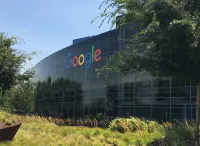
Google LLC is a multinational technology company specializing in online...
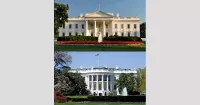
The White House located at Pennsylvania Avenue NW in Washington...
California is a U S state on the Pacific Coast...

Samsung Group is a South Korean multinational manufacturing conglomerate and...

A laptop or notebook computer is a small and portable...
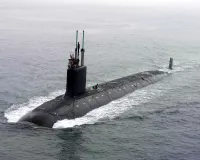
A submarine is a watercraft capable of independent operation underwater...
Trending
3 months ago IonQ Stock Surges After Quantum Networking Breakthrough: A Quantum Internet Revolution?
2 months ago United Airlines Flight Diverted After Windshield Cracks Mid-Air, Pilot Injured
6 months ago British Airways Chennai Flight Returns To London Heathrow Due to Technical Issue.
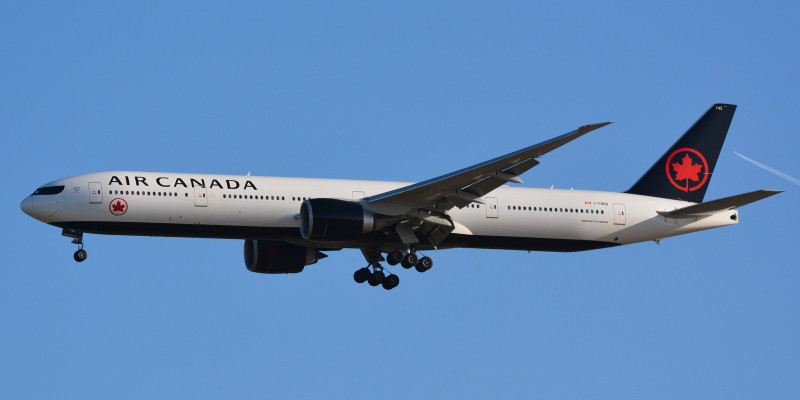
6 months ago Air Canada: Aeroplan Benefits for US Flyers Amidst Holiday Travel Disruptions
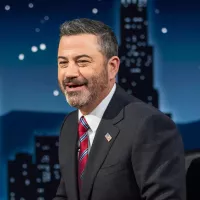
2 months ago Jimmy Kimmel Mocks Trump's Election Meltdown After Democratic Wins on Late Night.
5 months ago Senator concerned JetBlue and United partnership may negatively affect market competition.
Popular

XXXTentacion born Jahseh Dwayne Ricardo Onfroy was a controversial yet...

Ben Shapiro is a prominent American conservative political commentator media...

Candace Owens is an American conservative political commentator and author...

William Franklin Graham III commonly known as Franklin Graham is...
The Kennedy Center Honors are annual awards recognizing individuals and...

Stranger Things created by the Duffer Brothers is a popular...

